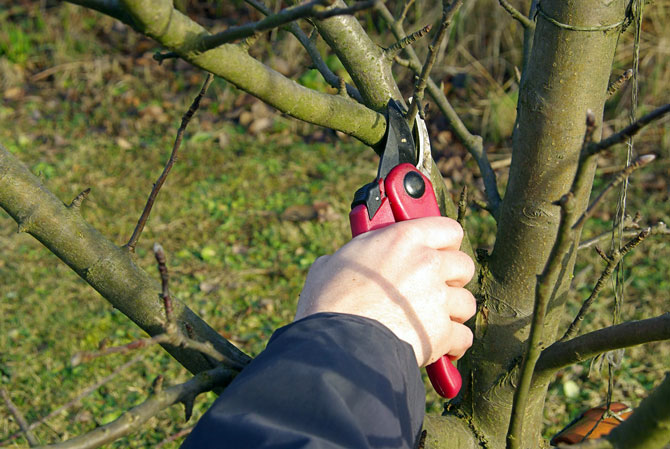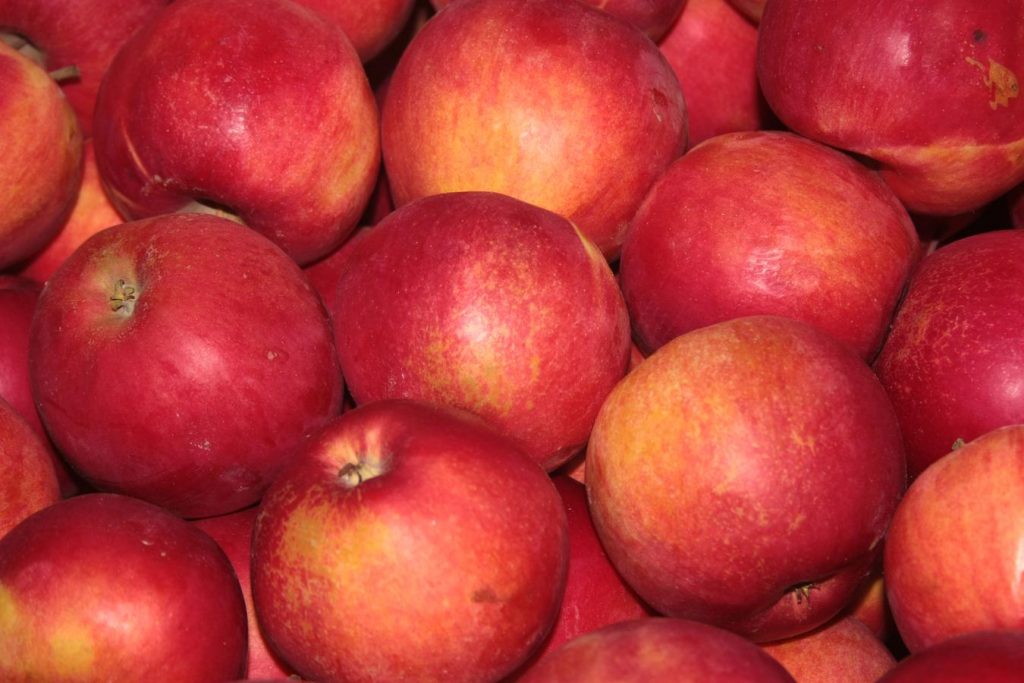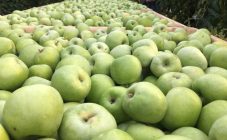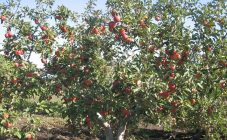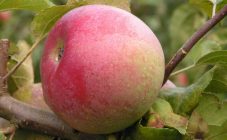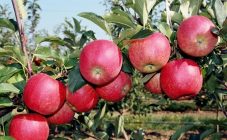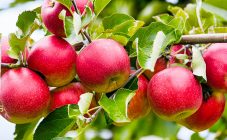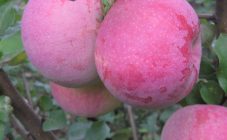Content:
Ayzdared apples attract fruit lovers. The producer of these delicious fruits is American breeders. The variety belongs to the winter and is grown in Russia in the southern regions, as well as in the Moscow region.
The history of the creation of the variety
The Idared variety became famous in the United States of America already in 1935. It was in this year, thanks to the reunification of the Jonathan and Wagner varieties, that a new variety of this wonderful fruit appeared. In America, everything is approached from a commercial point of view, so this time the hybrid was created in such a way as to save time on care and get large yields. Idared is not afraid of diseases or pests.
In Russia, these qualities were appreciated, and already from the sixties, apple seedlings came to Russia and firmly established themselves in the country. Soon, this variety of apples became the progenitor of new species, such as: Kazachka Kubanskaya, Vertical. Let's take a closer look at the characteristics of the Idared apple tree.
Characteristics and features of the variety
Idared apples begin to ripen in late September and early October. They belong to winter varieties. The surface of the apples is colored red with liquid crimson blush. Stripes also appear slightly on them. Fruits of medium size grow, weighing no more than two hundred grams. There is a slight bloom on the skin of apples, thanks to which they have the peculiarity of being stored not only throughout the winter, but also lie throughout the spring.
The fruit has a sweet-sour taste with a pronounced apple aroma. Rich in vitamins and minerals. The calorie content of the product can reach up to forty-seven calories per hundred grams of weight. But it should be borne in mind that this is not a final figure, since changes in one direction or the other are possible, depending on the place where the apple tree grows.
On the cut of the fruit, you can see a juicy white flesh, which has a slight fiber. During storage, the pulp undergoes significant changes and becomes sugary. Thanks to these features of the fruits, they will not leave indifferent any person.
The description of the Idared apple tree will give an opportunity to imagine this prolific tree. The tree itself grows very tall. It can reach at least six meters. Its trunk is large and strong, branches are spreading, creating a spherical crown. The surface of the trunk and branches is gray with a brown tint; on young shoots, the bark remains gray. The leaves are colored dark green.
The first flowers on an apple tree appear only in the third year of the tree's life. They bloom in the late April or early May. The inflorescences are pale white with a pink tint.
The apple tree of the Idared variety brings rich fruit yields. True, in the early years it was insignificant. Active fruiting begins after six years. The tree branches literally bend under the weight of juicy ripe apples.
The tree of this variety does not differ in high frost resistance, it is grown in most cases in the south of the country and the Moscow region. The air temperature in these regions in winter does not drop below minus twenty degrees.
Since the Idared apple variety does not need additional care, you still need to follow the basic rules of care to get high yields.They consist in timely watering, loosening, feeding and fertilizing the crop.
As already mentioned, the Idared apple tree is resistant to diseases, but some types of insects can still harm the tree and its fruits. She is afraid of such pests as aphids and honeydew.
Pests:
- The most dangerous of these is the aphid and its larvae, as they live on the leaves of the tree and feed on the sap, as a result of which the leaves dry and fall off. In order to resist the attack of these insects, the tree is sprayed with tobacco infusion or Bordeaux liquid in spring and autumn;
- Copperhead is an equally dangerous insect that harms not only the buds and flowers, but also makes its way to the roots of the plant. This insect reproduces in the autumn, laying eggs at the base of branches and buds. In spring, voracious larvae hatch from them. You can get rid of such an invasion with the help of insecticides;
- The red tick also loves to eat the leaves of this tree. To combat it, you need not only to use drugs, but also to cleanse the affected areas yourself;
- Apple fruits are very fond of apple sawfly and moth. The sawfly loves to feed on ovaries, which causes them to crumble. Ripe juicy apples taste better. To get rid of these pests, you need to process the tree at the stage of bud development.
If you get rid of pests in a timely manner, then the apple tree will delight the gardener with high yields.
The apple tree cannot self-pollinate. Therefore, she needs pollinators. For this, varietal apple trees are chosen, such as:
- Gloucester;
- Florin;
- Little mermaid.
The most important feature of this variety is the ability to grow an apple tree on any type of soil. At the same time, fruits grown on infertile soil have their own characteristic taste and smell.
Planting and leaving
Young trees can be planted both in autumn and in spring. For seedlings, it is still better to plant them from late September to mid-October. During the period that remains until the first frost, the apple tree has the opportunity to take root and prepare for winter.
Tree planting holes are dug sixty days before planting. Fertilizers are introduced into the pit and given time for them to be absorbed by the soil. The preparation process is as follows:
- The soil is carefully dug up and cleaned of weeds;
- At this time, peat, river sand and humus must be added to the soil. Do not ignore the advice to mix peat and sand. In this case, this mixture will better conduct excess water and nourish the roots with air. Thus, the roots of the apple tree will not rot;
- The pit is dug meter by meter with a depth of eighty centimeters. But the depth of the pit may be different. It depends on the development of the seedling root system. When planting, you need to ensure that the root collar is above the soil surface.
While planting a tree, you need to carefully ensure that the roots are evenly spread along the bottom of the pit. The tree trunk must be planted in such a way that it grows strictly vertically in relation to the soil surface. Having filled up the hole, the earth must be compacted, but at the same time leave a small hole near the root system in order to be able to water. It should be noted that at least three buckets of water must be poured under one tree.
When planting in spring, it is difficult for apple seedlings to take root just because during a strong warming they cannot do without timely watering. Young seedlings do not require additional feeding during the first year of planting. It is best done in the second or even third year. Plant feeding is carried out in the area of the near-trunk territory. As fertilizers for a garden tree, you should take:
- urea;
- potassium sulfate;
- nitroammophos.
In addition, the tree needs to be pruned periodically. This is done in order to form the crown. In addition, dry and weak branches are removed during clipping. You also need to remove dry twigs. After cutting, the tree must be watered.A young seedling drinks water in the amount of two to three buckets of water.
A young apple tree needs to be watered at least five times throughout the season. Later, watering is done rarely - about two to three times.
Advantages and disadvantages
The advantages of this apple variety include:
- big apples grow on the branches;
- the apple tree after planting begins to bear fruit very quickly;
- apples are stored for at least six months;
- they are well transported from place to place;
- with proper care, the tree gives a high yield.
Each coin has two sides, and the Idared apple tree has several disadvantages:
- With high immunity, the tree can still get sick with powdery mildew and scab;
- Requires periodic fertilization.
The Idared apple tree is suitable for cultivation, both in individual orchards, and in industrial, from where Idared apples are transported to markets and shopping centers. Since the tree is unpretentious to care for, you will not have to make any special efforts. The gardener will have a high yield of fruits every year. The only thing that is required is watering the tree and fighting insects.

